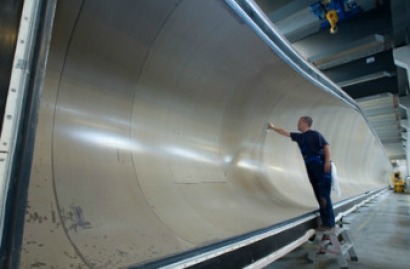
Increased investment in the wind energy sector would lead to an increase in the percentage of electricity generated from wind, a decrease in our reliance on foreign energy imports and ultimately, a reduction in electricity prices for the consumer.
Speaking about the Irish renewable energy landscape, Kenneth Matthews, CEO of the Irish Wind Energy Association said, “Greater investment by the government in infrastructure and development leads to greater certainty in the sector. And greater certainty means greater investment; the two are mutually reinforcing. Furthermore, the proactive and strategic development of wind energy has a clear role to play in Ireland’s road to economic recovery and in stimulating employment growth.”
In 1990, the amount of electricity generated from renewable energy sources in Ireland stood at just 5.3%. Due to heavy investment in and development of the sector over the last two decades, this figure has grown to approximately more than 15% today with wind energy contributing approximately 14% in 2011.
While the increase in renewable energy output is a positive step, Ireland still has the fourth highest rate of imported energy dependency of all EU countries and currently imports 86% of overall energy needs. This is not good news for the consumer or for energy security.
Every EU citizen is paying more than €700 for energy imports and this is increasing as prices climb and domestic resources deplete. But wind energy can supplement and in some cases replace imported fuels; offering potential savings of €5.7 billion across the EU in 2010 alone, while simultaneously creating employment and economic growth.
Increased contribution by wind energy to the overall energy mix in Ireland would also have a positive effect on the reduction in the cost of electricity for the consumer. Under the right conditions, wind energy could deliver a 11.5% reduction (€256 million) in wholesale electricity prices by 2020 in Ireland.
“EU funds must be leveraged, for example through the European Investment Bank and by potentially using structural funds, towards technologies that can make a significant and immediate impact on jobs, while reducing Europe’s fuel import bill. Onshore wind energy offers the greatest short-term stimulus potential, followed by offshore wind energy and investments in electricity infrastructure,” commented Christian Kjaer, CEO of the European Wind Energy Association.
Wind energy and its benefits must also be prioritised in the EU’s 2014 to 2020 budget, currently under discussion. More R&D funding is needed under ‘Horizon 2020’ to bring costs down and allow wind energy to reach its potential and two-thirds of the €9.1 billion for energy networks should be allocated to electricity. This will allow more renewables into the system, decreasing the need for fuel imports, increasing security of supply and bringing down power prices.
Established in 1993, the Irish Wind Energy Association has more than 250 members who incorporate all leading industry voices in Ireland.
For additional information:

